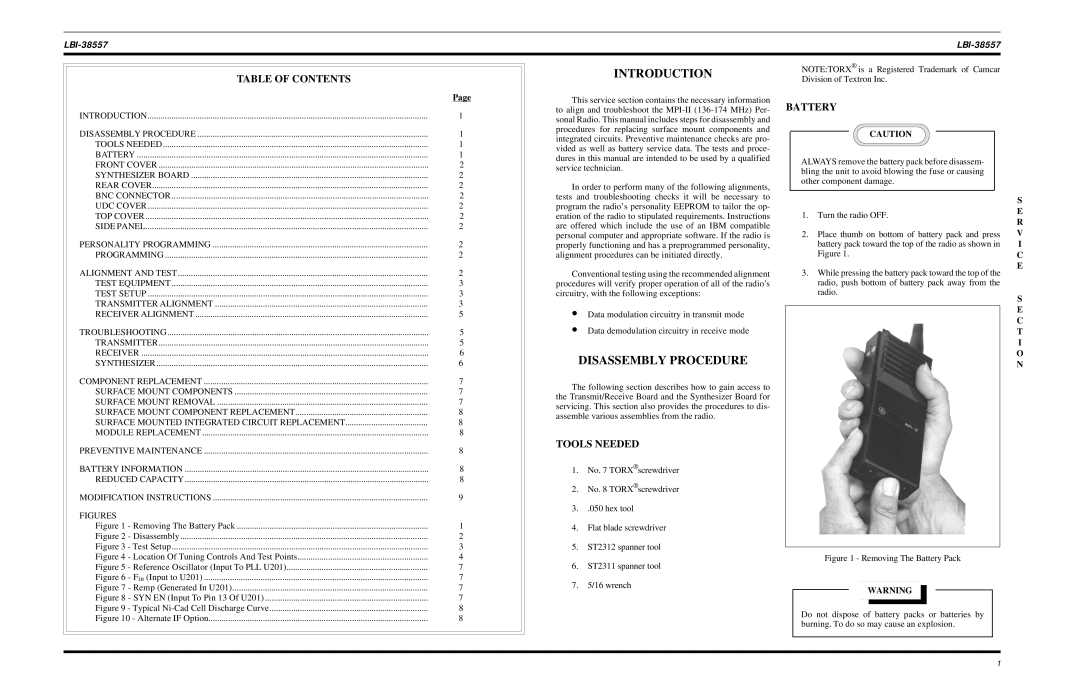MPI-II VHF specifications
The Ericsson MPI-II VHF is a cutting-edge mobile radio communication system designed to facilitate reliable and efficient communication in various environments. Featuring advanced technologies, the MPI-II is particularly suited for organizations that require dependable communication under challenging conditions, such as public safety agencies, transportation services, and other sectors where operational continuity is essential.One of the hallmark features of the Ericsson MPI-II VHF is its robust construction, making it resilient against environmental stresses such as temperature fluctuations, humidity, and mechanical shocks. This durability ensures that it can withstand the rigors of outdoor operations and maintain functionality in harsh conditions.
The MPI-II operates on the Very High Frequency (VHF) range, allowing for long-range communication capabilities. This is particularly advantageous in scenarios where coverage needs to extend over large areas, such as in rural or mountainous regions. The design of the radio system also enables it to provide clear audio quality, which is critical for effective communication, especially in emergencies.
Another significant technology integrated into the MPI-II is its digital signal processing (DSP) capabilities. This feature enhances audio clarity even in high-interference environments, reducing background noise and ensuring that critical messages are conveyed effectively. This level of clarity can be a lifesaver in urgent situations where miscommunication can lead to severe consequences.
The radio also supports a wide range of accessories, including microphones and headsets, allowing for customized solutions tailored to specific operational needs. User-friendly interfaces and programmable features enable users to configure the device to their preferences, improving efficiency in communication.
Moreover, the Ericsson MPI-II VHF incorporates secure communication technologies to ensure that sensitive information remains protected from unauthorized access. This feature is crucial for sectors that deal with confidential data and require assurance against potential breaches.
In terms of energy efficiency, the MPI-II is designed to consume less power, extending the operational lifespan during field use. This is critical in situations where access to power sources is limited.
With its blend of durability, advanced digital processing, secure communication, and energy-efficient design, the Ericsson MPI-II VHF stands out as a reliable solution for professional communication across various industries. It embodies the evolving landscape of mobile communication technology, ensuring that users remain connected and informed in any situation.

